

The Presentation of the Virgin in the Temple, 1534-38 by Titian
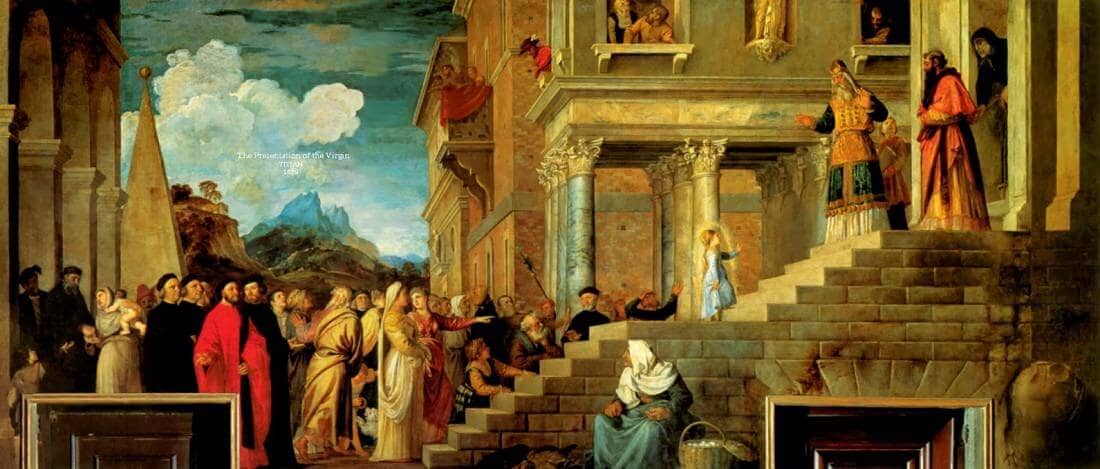
This vast canvas still decorates the wall for which it was created in the Sala dell'Albergo of the Scuola Grande di Santa Maria della Carita - which was transformed into the galleries of the Accademia early in the last century. The original commission had been awarded in 1504 to a little-known Venetian painter, Pasqualino Veneto, who died, however, before carrying it out; not until thirty years later did the confraternity return to the project. The prehistory behind Titian's painting may be particularly significant, since it has often been observed that the master here invoked an archaic compositional tradition, that of the narrative tableaux developed in the late fifteenth century. The brothers of the Carita had indeed retained Pasqualino's design and perhaps insisted that certain of its aspects be followed. However that may be, Titian accepted the challenge; working within the context of that conservative heritage, he transformed the inherited material, elevating it to new levels of formal monumentality and expressive subtlety.
The flowing procession of the narrative line, the basic parallelism of the spatial structure, the asymmetry of the backdrop, the mixing of contemporary portraits (of the officers of the scuola) and architecture with a historically distant subject - these devices are all characteristic of the art of an older generation, that of Gentile Bellini and Carpac-cio. Measured against this background, Titian's variations stand out in high relief: the rhythms of his procession are more dynamic and, within the constraints of the processional format with its insistent regularity, his figures move with energy and variety, distinguishing themselves by the quality of their poses and gestures. Dominating the varied crowd, however, and focusing its diverse energies, is the diminutive figure of Mary ascending the steps of the temple; she is the unifying factor in this disparate assembly, whose members either actually accompany her on this historical occasion (her parents, the attendant virgins, the welcoming priests), bear witness to the event (the sixteenthcentury followers of the procession), or, like us, observe the full spectacle from a certain distance (the spectators watching from the palace windows and balcony above).
Throughout the composition Titian has emphasized the plane, and elements of spatial recession have been deliberately muted. The progress of the procession is plotted against the structural coordinates of the architecture which pace the rhythm across the length of the field - a movement measured by the clear modular units of the staircase wall, and again by the smaller rectangles of the diaper masonry in the middle distance. The foreground wall has been fitted with precision to the actual door of the room, its drafted masonry adapted to form the lintel (the door to the left was cut into the painting later, in 1572). Such pictorial artifice, immediately juxtaposing the fictive and the real, also implies an identification of the painted stone wall with the surface of the canvas - and hence with the wall of the albergo itself.
Before the painted wall Titian set two forms, an old woman and an antique torso. Because they are so deliberately isolated in an ambiguous zone, they acquire very special status. The old egg seller, in particular, placed below the Virgin and so pointedly looking in the opposite direction, counters the basic flow of the pageant's narrative impulse, while the torso remains hidden in the corner darkness. By their placement outside the space of the event, they represent, with the imaginative concreteness with which Titian endowed abstractions, the worlds of the Old Testament and of Greco-Roman antiquity, the era before Christian grace.
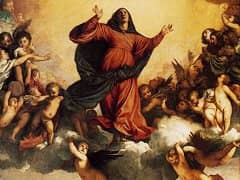
The Assumption of the Virgin
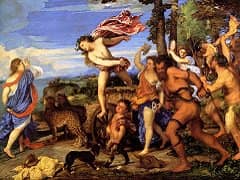
Bacchus and Ariadne
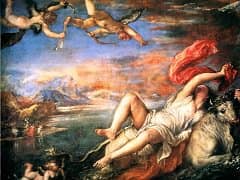
Rape of Europa
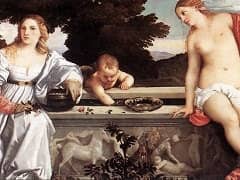
Sacred and Profane Love
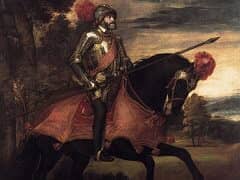
Equestrian Portrait of Charles V

Christ Carrying the Cross
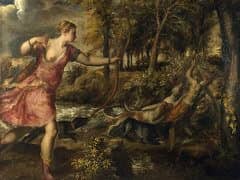
The Death of Actaeon
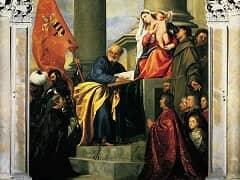
Pesaro Madonna

Flaying of Marsyas

Annunciation
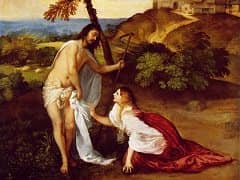
Noli me Tangere

An Allegory of Prudence
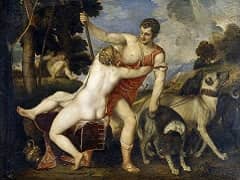
Venus and Adonis
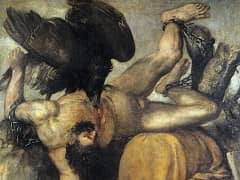
The Crowning with Thorns
Academia.edu no longer supports Internet Explorer.
To browse Academia.edu and the wider internet faster and more securely, please take a few seconds to upgrade your browser .
Enter the email address you signed up with and we'll email you a reset link.
- We're Hiring!
- Help Center

Titian’s Presentation of the Virgin in the Temple (1534-38)

2014, EPPH | Every Painter Paints Himself
Related Papers
EPPH | Every Painter Paints Himself
Simon Abrahams
Philip Sohm
Luba Freedman
Jonathan Unglaub
Muhammad Nassar
Anggraeni Putri Manikam
The purpose of this study is twofold. Firstly, it examines the long run performance of stock return of firms making Initial Public offering (IPOs) in Indonesian Stock Exchange. Secondly, it examines whether there is difference of long-term return performance results after initial public offering (IPO) using two different methods, cumulative abnormal returns (CARs) and Buy-and-Hold Abnormal Returns (BHARs). A sample of 53 firms making IPO between 2005 and 2009 is examined. The study uses t-test for mean and Wilcoxon test for median to test for the hypothesis. Sample is separated arbitrarily into three groups based on firm size and book to market ratio. The results of the study show that IPOs are underperform over the long-run period. This finding affirms results reported in the previous studies. Firm size and B/M ratio groups of CARs and BHARs have similar results pattern. Comparison using CARs and BHARs measurement reveals that the mean and median of CARs is mostly higher than BHARs...
Elżbieta Lachert
RELATED PAPERS
The Earth Institute at Columbia University, …
Jeffrey Sachs
Mot so razo
Victor Millet
TIERS Information Technology Journal
Widia prasetia
Comparative Education
Megumi Shibuya
Molecular Biology of Kinetoplastid Parasites
Shalini Saini
2008 Annual Conference & Exposition Proceedings
William Beasley
The Plant Genome
JULIUS D P MBIU
S. Gurovich
International Review of Management and Marketing
otto bustani
Journal of Nanomaterials
Tay Chin Ling
Monthly Notices of the Royal Astronomical Society
Elizabeth Johana Gonzalez
Journal of Systems Research
Soham Sinha
International Journal of Economic Sciences
Gloria Gheno
Samih Abdul-Nabi
ACM SIGGRAPH 2002 conference abstracts and applications
Diane Gromala
Radiocarbon
Mihály Veres
American Journal of Medical Genetics Part A
Prafulla Ambulkar
veronica schmidt
JST: Smart Systems and Devices
Nguyễn Hùng
Springer eBooks
Ezra Chitando
Michael P. Johnson
Camilo Diaz Garcia
RELATED TOPICS
- We're Hiring!
- Help Center
- Find new research papers in:
- Health Sciences
- Earth Sciences
- Cognitive Science
- Mathematics
- Computer Science
- Academia ©2024
- The Collection
- The American Wing Ancient Near Eastern Art Arms and Armor The Michael C. Rockefeller Wing Asian Art The Cloisters The Costume Institute Drawings and Prints Egyptian Art European Paintings European Sculpture and Decorative Arts Greek and Roman Art Islamic Art Robert Lehman Collection The Libraries Medieval Art Musical Instruments Photographs Antonio Ratti Textile Center Modern and Contemporary Art
Crop your artwork:
Scan your QR code:
Gratefully built with ACNLPatternTool
The Presentation of The Virgin in the Temple, from "The Life of The Virgin"
Albrecht Dürer German
Not on view
Due to rights restrictions, this image cannot be enlarged, viewed at full screen, or downloaded.

Open Access
As part of the Met's Open Access policy , you can freely copy, modify and distribute this image, even for commercial purposes.
Public domain data for this object can also be accessed using the Met's Open Access API .
- https://www.metmuseum.org/art/collection/search/388602 https://www.metmuseum.org/art/collection/search/388602 Link copied to clipboard
- Animal Crossing
- Download image
- Enlarge image
Artwork Details
Use your arrow keys to navigate the tabs below, and your tab key to choose an item
Title: The Presentation of The Virgin in the Temple, from "The Life of The Virgin"
Series/Portfolio: The Life of the Virgin
Artist: Albrecht Dürer (German, Nuremberg 1471–1528 Nuremberg)
Date: ca. 1503
Medium: Woodcut
Dimensions: sheet: 11 3/4 x 8 5/16 in. (29.9 x 21.1 cm)
Classification: Prints
Credit Line: Bequest of Grace M. Pugh, 1985
Accession Number: 1986.1180.81
Learn more about this artwork
Timeline of art history, albrecht dürer (1471-1528), anselm kiefer (born 1945), arms and armor - common misconceptions and frequently asked questions, europe and the age of exploration, jan gossart (ca. 1478-1532) and his circle, portraiture in renaissance and baroque europe, rembrandt van rijn (1606-1669): prints, the decoration of arms and armor, the printed image in the west: history and techniques, the rediscovery of classical antiquity, the reformation, central europe (including germany), 1400-1600 a.d., related artworks.
- All Related Artworks
- By Albrecht Dürer
- Drawings and Prints
- Relief prints
- From Europe
- From Germany
- From A.D. 1400–1600
Das Narrenschyff
Underweysung der messung/ mit dem zirckel und richtscheyt, opera alberti dureri. das ist / alle bücher des weitberühmbten... .cont.: underweysung der messung [. . .] vier bücher von menschlicher proportion; etliche underricht /zu befestigung// der stett/ schloss und flecken, di alberto durero pittore, e geometra. . .della simmetria dei corpi humani, libri quattro nuouamente tradotti dalla lingua latina nella italiana.
The Flight into Egypt, from The Life of the Virgin, from the Latin Edition

How Woodcuts are Made
Resources for research.
The Met's Libraries and Research Centers provide unparalleled resources for research and welcome an international community of students and scholars.
The Met Collection API is where all makers, creators, researchers, and dreamers can connect to the most up-to-date data and public domain images for The Met collection. Open Access data and public domain images are available for unrestricted commercial and noncommercial use without permission or fee.
We continue to research and examine historical and cultural context for objects in The Met collection. If you have comments or questions about this object record, please complete and submit this form . The Museum looks forward to receiving your comments.

Drawings and Prints at The Met
Master of the Life of the Virgin, The Presentation in the Temple
The priest Simeon is shown receiving the infant Christ from the Virgin Mary in front of an elaborate altar. The scene is based on a passage in the Gospel of Luke (2:22–40), which describes Mary and Joseph’s visit to the temple in Jerusalem for the rituals of Mary’s purification and of Christ’s presentation to God.
Simeon recognised Christ’s divinity upon seeing him, saying ‘Lord, now lettest thou thy servant depart in peace, according to thy word: For mine eyes have seen thy salvation’ (Luke 2: 29–30). The embroidery on his cope shows the Roman Emperor Augustus having a vision of the Virgin and Child – a decisive experience which made the ruler recognise that their spiritual power was greater than his.
This painting, along with seven other panels now in the Alte Pinakothek, Munich, once formed part of the central panel of an altarpiece made for the church of Saint Ursula in Cologne. It was commissioned by Dr Johann von Hirtz, a councillor in the city.
This scene is based on a passage in the Gospel of Luke (2:22-40), which describes Mary and Joseph’s visit to the temple in Jerusalem for the rituals of Mary’s purification and of the infant Christ’s presentation to God. In conformity with Jewish law, all women had to be ritually purified forty days after giving birth, while first-born sons were to be presented and redeemed by an offering to God. The priest, Simeon, is shown receiving the infant from Mary in front of an elaborate altar. The two turtle doves held by a woman at the left were brought as the sacrificial offering to secure Christ’s redemption.
Simeon was the first to recognise Christ’s divinity after the latter’s birth. Upon seeing the child, the priest said: ‘Lord, now lettest thou thy servant depart in peace, according to thy word: For mine eyes have seen thy salvation’ (Luke 2: 29–30). The Old Testament scenes visible on the carved stone altarpiece and on the back of Simeon’s embroidered cope underscore the theological significance of the event, as they were deemed to foreshadow Christ’s Passion. The altarpiece shows Cain slaying his brother Abel, the sacrifice of Isaac, and the drunkenness of Noah, while the embroidery of Simeon’s cope depicts the Roman Emperor Augustus’s vision of the Virgin and Child during which he – a pagan – recognised that their spiritual power was greater than his. The small boys cast in bronze who hold up the altar may be references to pagan art, and reinforce the message of the cope by illustrating that paganism was surpassed by Judaism and Christianity.
The painting once formed part of an altarpiece made for the church of Saint Ursula in Cologne, consisting of scenes of the life of the Virgin Mary. Seven other panels are today in the collection of the Alte Pinakothek in Munich. The work was commissioned by Johann von Hirtz, an alderman and mayor of the city.
The centre panel of the altarpiece consisted of four scenes arranged in a square grid – The Presentation in the Temple appeared in the lower right. It was once thought that the altarpiece took the form of a triptych (a painting composed of three parts) but recent technical analysis has raised the possibility that the panels may have been shown individually or in a different formation to that of a triptych.
Download a low-resolution copy of this image for personal use.
License and download a high-resolution image for reproductions up to A3 size from the National Gallery Picture Library.
This image is licensed for non-commercial use under a Creative Commons agreement .
Examples of non-commercial use are:
- Research, private study, or for internal circulation within an educational organisation (such as a school, college or university)
- Non-profit publications, personal websites, blogs, and social media
The image file is 800 pixels on the longest side.
As a charity, we depend upon the generosity of individuals to ensure the collection continues to engage and inspire. Help keep us free by making a donation today.
You must agree to the Creative Commons terms and conditions to download this image.

More paintings by Master of the Life of the Virgin
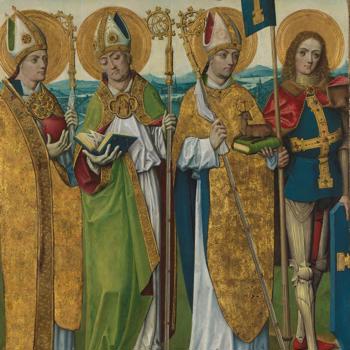
See all hours
- Tue–Wed Closed
- Fri–Sun 11–5
- The first hour of every day, 10–11 a.m., is reserved for member-only viewing.
The Presentation of the Virgin in the Temple, from The Life of the Virgin
Image actions.
- Show this image
Currently Off View
- Prints and Drawings
c. 1503–04, published 1511
Albrecht Dürer German, 1471-1528
About this artwork
Date dates are not always precisely known, but the art institute strives to present this information as consistently and legibly as possible. dates may be represented as a range that spans decades, centuries, dynasties, or periods and may include qualifiers such as c. (circa) or bce., credit line, reference number, iiif manifest the international image interoperability framework (iiif) represents a set of open standards that enables rich access to digital media from libraries, archives, museums, and other cultural institutions around the world. learn more ., extended information about this artwork, catalogues raisonnés.
Meder 193 1511 Latin text
Schoch, Mende, & Scherbaum 171
Object information is a work in progress and may be updated as new research findings emerge. To help improve this record, please email . Information about image downloads and licensing is available here .
Explore Further
Sign up for our enewsletter to receive updates..
- News and Exhibitions Career Opportunities Families
- Public Programs K-12 Educator Resources Teen Opportunities Research, Publishing, and Conservation
Gallery actions
Suggested terms.
- Free Admission
- My Museum Tour
- What to See in an Hour
John Baptist Jackson
Description.
John Baptist Jackson ( British , 1701-ca. 1780), designer Titian ( Italian
Presentation of the Virgin in the Temple Titiani Vecelii, Paul Caliarii, Jacobi Robusti et Jacobi de Ponte; Opera Selection a Joanne Baptista Jackson, Angelo, Ligano Coelata et Coloribus Adumbrata
- chiaroscuro woodcut
Materials/Techniques
- Medium weight cream laid paper
Signature / Inscription / Marks
In Plate--Inscribed in shield in LR:DUCIT AMOR PATRIAE; inscribed in LR:Per Illustri, ac Nobili Viro D: no D: no/ ERASMO PHILLIPPS BARRONETTO/ Artium Zelantissmo Fautori, et de re litteraria/optime merito, Tabulan hane tehue debitae venerationis.suae argumentum, emeritissimo Patrono, et Mecaenati/commendat et dicatJ: B:Jackson.
Marks: Stamped in brown ink on verso:R.I.S.D./MUSEUM/OF ART surrounded by PROVIDENCE/RHODE ISLAND
Credit / Object Number
Museum Collection
Object Number
More objects +
Use & Feedback
The images on this website can enable discovery and collaboration and support new scholarship, and we encourage their use.
To request new photography, please send an email to [email protected] and include your name and the object's accession number.
We view our online collection as a living documents, and our records are frequently revised and enhanced. If you have additional information or have spotted an error, please send feedback to [email protected] .
Where next?
Explore related content
The Presentation of the Virgin in the Temple
Nicolas chaperon 1639, the museum of fine arts, houston houston, united states.
- Title: The Presentation of the Virgin in the Temple
- Creator: Nicolas Chapron
- Creator Lifespan: 1612 - 1656
- Creator Nationality: French
- Creator Gender: Male
- Date Created: 1639
- Physical Dimensions: w44.1 x h59.1 cm (without frame)
- Type: Painting
- Medium: Oil on canvas
- Credit Line: The Museum of Fine Arts, Houston, museum purchase funded by the Laurence H. Favrot Bequest
Get the app
Explore museums and play with Art Transfer, Pocket Galleries, Art Selfie, and more


IMAGES
VIDEO
COMMENTS
The Presentation of the Virgin in the Temple, 1534-38 by Titian. This vast canvas still decorates the wall for which it was created in the Sala dell'Albergo of the Scuola Grande di Santa Maria della Carita - which was transformed into the galleries of the Accademia early in the last century. The original commission had been awarded in 1504 to a ...
The Presentation of the Virgin at the Temple is a 1534-1538 painting by Titian. It depicts the three year-old Virgin Mary entering the Temple of Jerusalem. [1] It was commissioned by the fraternity based in the Scuola Grande di Santa Maria della Carita, a building later incorporated into the Galleria dell'Accademia, where the work now hangs.
In recognition of Prof. David Rosand's life-long involvement with Titian's great painting, and years of service to Save Venice, the Board of Directors dedicated the restoration of the Presentation of the Virgin in the Temple t o him, with deep admiration and affection. Titian executed this canvas depicting the Presentation of the Virgin in ...
The Presentation of the Virgin at the Temple is a 1534-1538 painting by Titian. It depicts the three year-old Virgin Mary entering the Temple of Jerusalem. It was commissioned by the fraternity based in the Scuola Grande di Santa Maria della Carita, a building later incorporated into the Galleria dell'Accademia, where the work now hangs.
The presentation of the Virgin at the Temple. Ca. 1697. Grey-brown wash, Black chalk, Ink on laid paper. When the Virgin Mary was three years old her parents, Anna and Joachim, led her to the Temple of Jerusalem. There the young Virgin, without the assistance of her parents, climbed the staircase leading to the priest, who, surrounded by the ...
the Temple, the Annunciation to Joachim (and/or to Anna), the Meeting at the Golden Gate, and the Betrothal of the Virgin. [2] These (and possibly other) scenes would have accompanied a central image of the Madonna and Child, [3] or of Saint Anne with the Madonna and Child, [4] a Coronation of the Virgin, [5] or a theme
The Presentation of the Virgin at the Temple. 1654. Oil on canvas. We begin to have information about Santiago Morán Cisneros, son of Santiago Morán - Philip III's royal painter - and his wife Catalina de Cisneros, and his dedication to painting, between the mid-1630s and the beginning of the 1640s. In 1654, he signed The Presentation ...
Superficially the canvas depicts the apocryphal story of the Virgin entering the Temple at 3 years old to consecrate her life to God. 1 Mary, watched by the crowd, is alone on the steps as though in the middle of a theatrical performance. Titian, The Presentation of the Virgin in the Temple (1534-38) Oil on canvas. Accademia, Venice.
Title: The Presentation of The Virgin in the Temple, from "The Life of The Virgin" Series/Portfolio: The Life of the Virgin. Artist: Albrecht Dürer (German, Nuremberg 1471-1528 Nuremberg) Date: ca. 1503. Medium: Woodcut. Dimensions: sheet: 11 3/4 x 8 5/16 in. (29.9 x 21.1 cm) Classification: Prints. Credit Line: Bequest of Grace M. Pugh, 1985
The Presentation of the Virgin in the Temple. Third quarter of the XVI century. Wash, White lead, Pencil, Grey-brown ink on blue paper. By far the most prestigious commission of Trometta´s entire career was the fresco decoration of the ceiling of the choir of the church of S. Maria in Aracoeli, Rome. On 30 January 1565 he contracted to carry ...
The Presentation of the Virgin in the Temple Paolo di Giovanni Fei 1398-1399. National Gallery of Art, Washington DC Washington, DC, United States. This engaging narrative scene was the center panel of an altarpiece commissioned in 1398 for the Chapel of Saint Peter, near the high altar of the cathedral in Siena. It would have been flanked, in ...
Other articles where Presentation of the Virgin in the Temple is discussed: Titian: Religious paintings: The stately Presentation of the Virgin in the Temple, a very large canvas, reflects the splendour of Venetian Renaissance society in the great architectural setting, partly in the latest style of the contemporary architects Sebastiano Serlio and Jacopo Sansovino.
November 14th 2020. "Presentation of the Virgin in the Temple", Titian, c.1534 -38, Gallerie dell' Accademia, Venice. Titian painted this canvas between 1534 and 1538 for a room in the Scoula Grande di S. Maria della Carità in Venice. Later on the room became part of the Galleria dell' Accademia . " The Golden Legend" relates that ...
Originally, the structure would have been gabled at the top, with elaborate gold moldings framing each section. According to legend, the Virgin entered the temple in Jerusalem at age three and remained until she was 14. In this depiction, she stands at the top of the long stair with a last sidelong look at her parents, yet she remains fearless ...
The Presentation of the Virgin Mary at the Temple is a painting by the Italian Renaissance master Cima da Conegliano, c. 1496-1497, in the Gemäldegalerie Alte Meister of Dresden, Germany, of the Presentation of Mary. The work presents the theme, apocryphal, but common in Christian art, of the presentation of the Virgin Mary in the Temple of ...
The priest Simeon is shown receiving the infant Christ from the Virgin Mary in front of an elaborate altar. The scene is based on a passage in the Gospel of Luke (2:22-40), which describes Mary and Joseph's visit to the temple in Jerusalem for the rituals of Mary's purification and of Christ's presentation to God.
The Presentation of the Virgin in the Temple Andrea di Bartolo c. 1400/1405. National Gallery of Art, Washington DC Washington, DC, United States. Details. Title: The Presentation of the Virgin in the Temple; Creator: Andrea di Bartolo; Date Created: c. 1400/1405; External Link:
The exact subject matter of this panel remains in doubt, since the Virgin neither climbs the steps of the temple nor is welcomed by the high priest, features generally included in depictions of the Presentation. Fra Carnevale, a Dominican friar, was clearly inspired by ancient Roman architecture and sculpture as well as by the new science of ...
The Presentation of the Virgin in the Temple, from The Life of the Virgin Place Germany (Artist's nationality:) Date Dates are not always precisely known, but the Art Institute strives to present this information as consistently and legibly as possible. Dates may be represented as a range that spans decades, centuries, dynasties, or periods and ...
John Baptist Jackson (British, 1701-ca. 1780), designer. Titian (Italian. Venetian, 1488/90-1576), painter. Presentation of the Virgin in the Temple; Titiani Vecelii, Paul Caliarii, Jacobi Robusti et Jacobi de Ponte; Opera Selection a Joanne Baptista Jackson, Angelo, Ligano Coelata et Coloribus Adumbrata, 1742. [email protected].
Presentation of the Virgin is an oil on canvas painting of the Presentation of Mary by Tintoretto, created c. 1551-1556, in the church of Madonna dell'Orto in Venice. [1] Its diagonals aim to provide a stark contrast to Titian 's 1534-1538 work of the same subject. [2] Vasari 's Lives of the Artists calls it "A finished work, and the best-made ...
The Presentation of the Virgin in the Temple Nicolas Chaperon 1639. The Museum of Fine Arts, Houston Houston, United States. Details. ... Temple. Google apps. Google Arts & Culture features content from over 2000 leading museums and archives who have partnered with the Google Cultural Institute to bring the world's treasures online. ...
Added: 27 Mar, 2024. 'The Presentation of the Virgin' was created in 1556 by Tintoretto in Mannerism (Late Renaissance) style. Find more prominent pieces of religious painting at Wikiart.org - best visual art database.
42 likes, 0 comments - socofmaryNovember 21, 2023 on : "Today we celebrate the Presentation of the Virgin May. The account of the Presentation of the Blessed Virgin Mary in the Temple is principally based on the Protoevangelium of James, which has been dated by historians prior to the year 200 AD. #virginmary #virginmarystatue #anglocatholic #avemaria #hailmary #blessedvirgin #catholic # ...